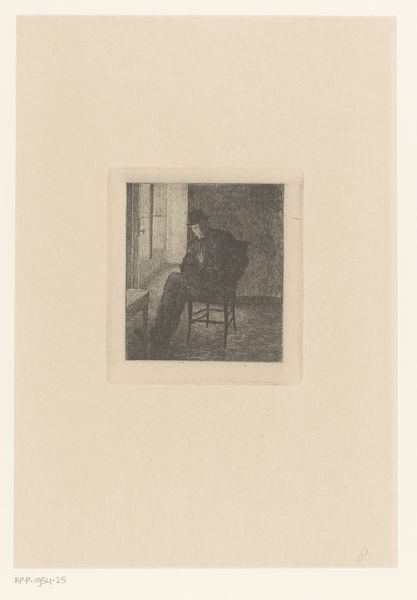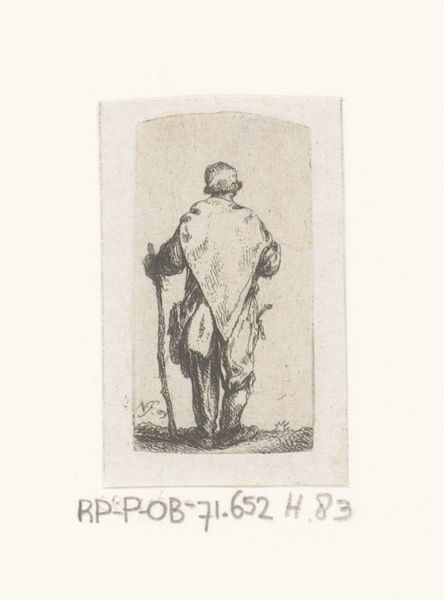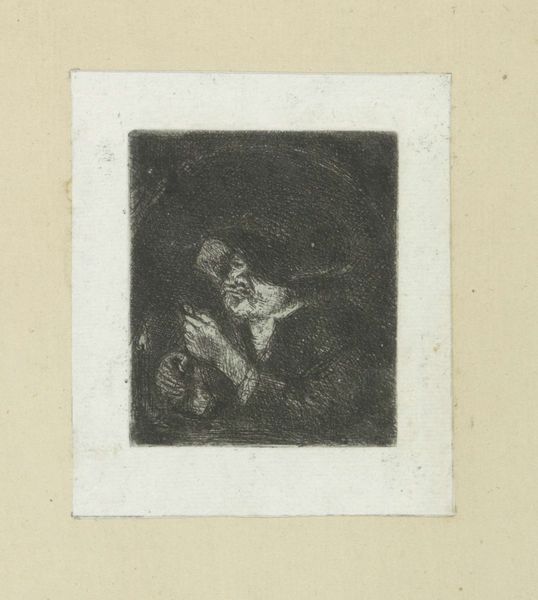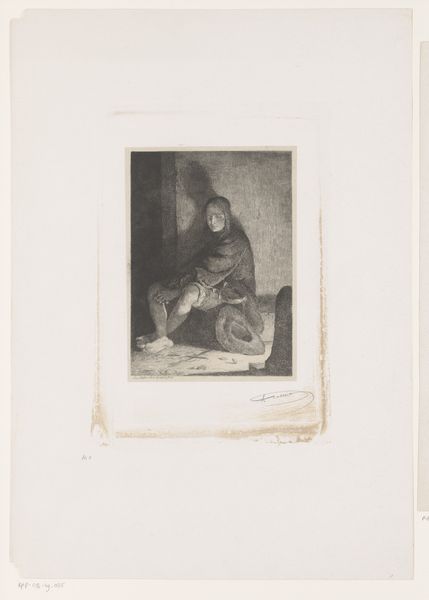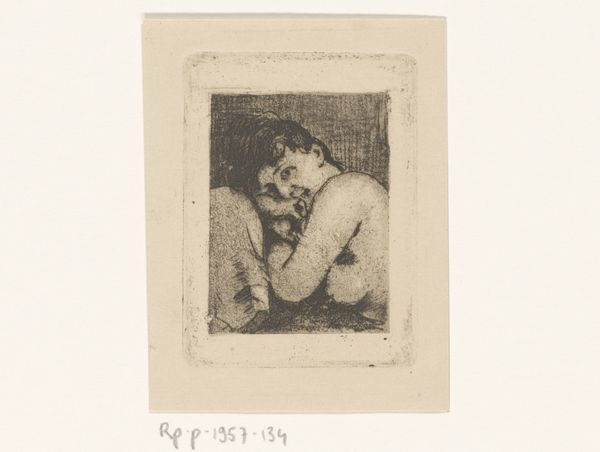
drawing, print, etching
#
portrait
#
drawing
# print
#
etching
#
genre-painting
Dimensions: 1 x 13/16 in. (2.5 x 2.1 cm) (image)1 7/8 x 1 5/8 in. (4.8 x 4.2 cm) (sheet)
Copyright: Public Domain
Jean-Pierre Norblin de la Gourdaine created this print called ‘The Chronicler’ using etching. Look closely, and you will see a figure hunched over a table, writing. The scene’s interior setting and the presence of a window suggest a quiet, contemplative space, set apart from the world. Norblin de la Gourdaine worked in late 18th- and early 19th-century France and Poland, a period defined by Enlightenment ideals and revolutionary fervor. In France, the aristocracy's grip on culture had begun to loosen. New institutions like public museums fostered critical engagement with the arts. The image suggests an emerging emphasis on individual experience. The act of chronicling, of recording events and observations, gained importance. In times of political upheaval the role of the ‘chronicler’ was to create narratives that could influence or challenge established norms. To fully understand a work like this, one must delve into the history of printmaking, explore the intellectual debates of the time, and consider the artist's biography. It’s a journey into a world of changing social values.
Comments
minneapolisinstituteofart over 1 year ago
⋮
Jean-Pierre Norblin de la Gourdaine was a French painter and printmaker active in Poland in the late 18th century. Norblin's charming miniature etchings, representing mostly male heads, street sellers, and vagabonds, reflect both in subject and technique the profound influence of Rembrandt's prints. Norblin was also drawn to Polish subjects, capturing the unfamiliar, exotic world around him in his depictions of men with colossal fur hats and curled moustaches, Cossacks, and Polish historical figures.
Join the conversation
Join millions of artists and users on Artera today and experience the ultimate creative platform.




